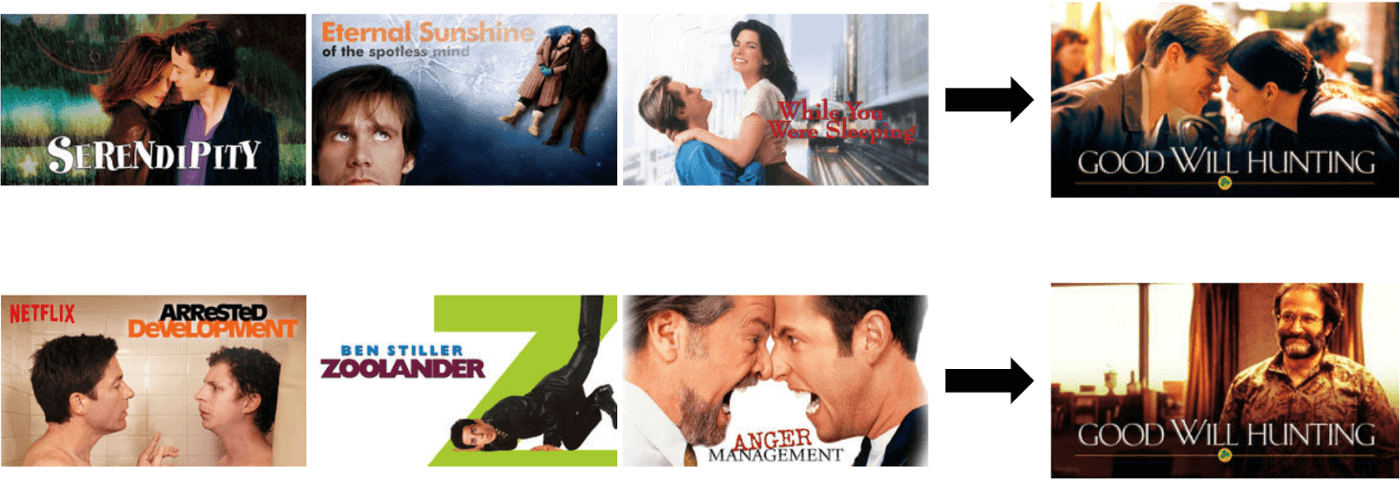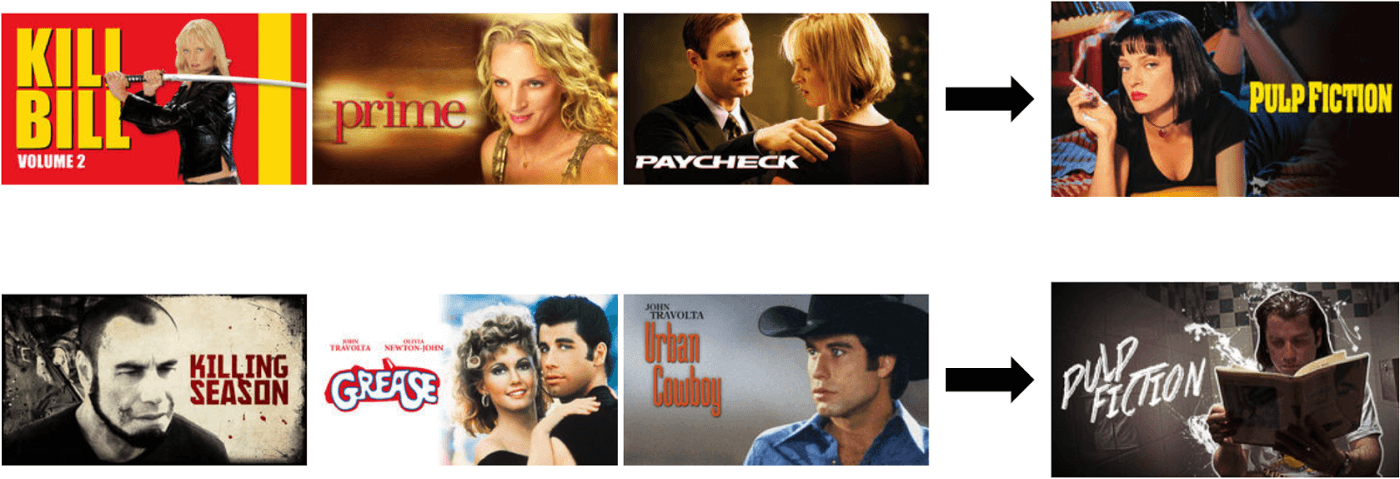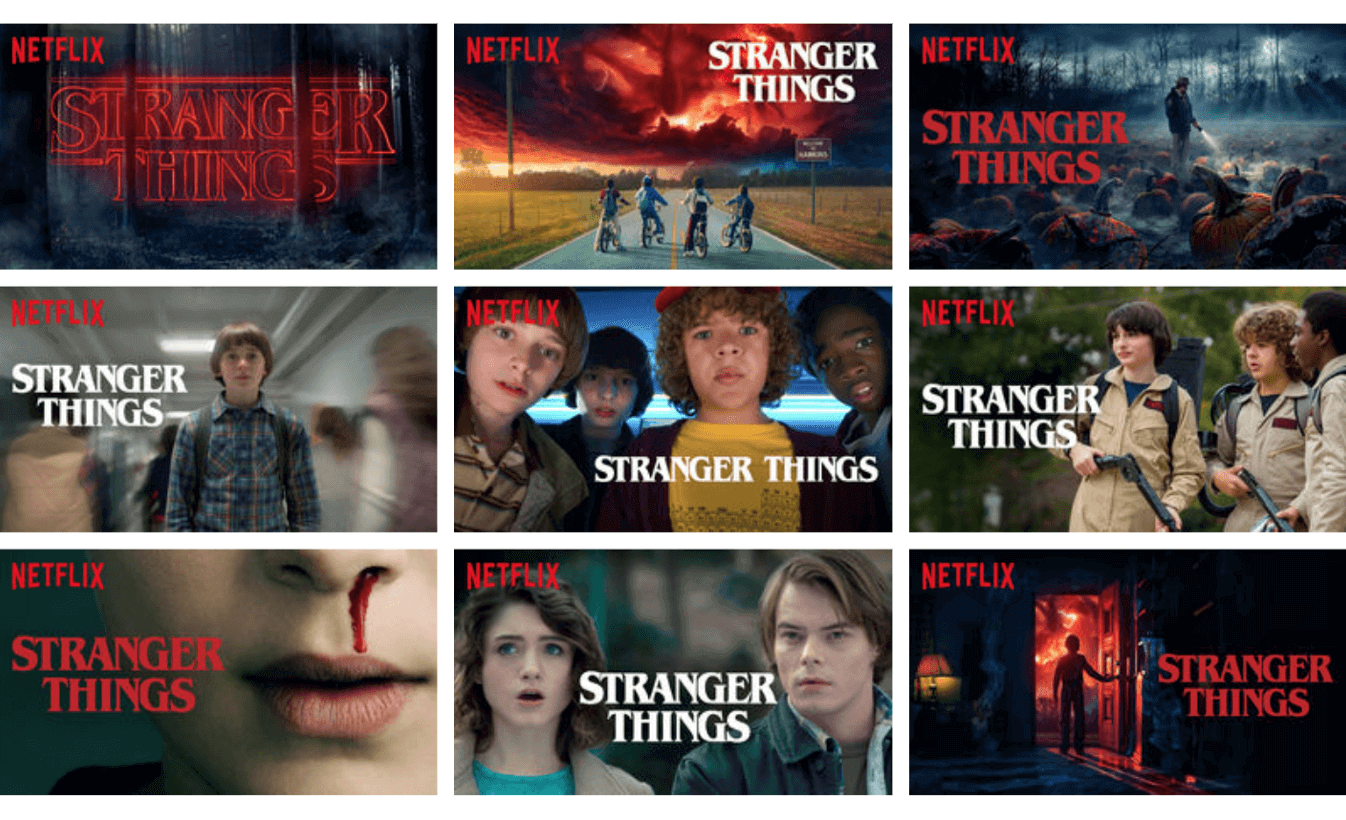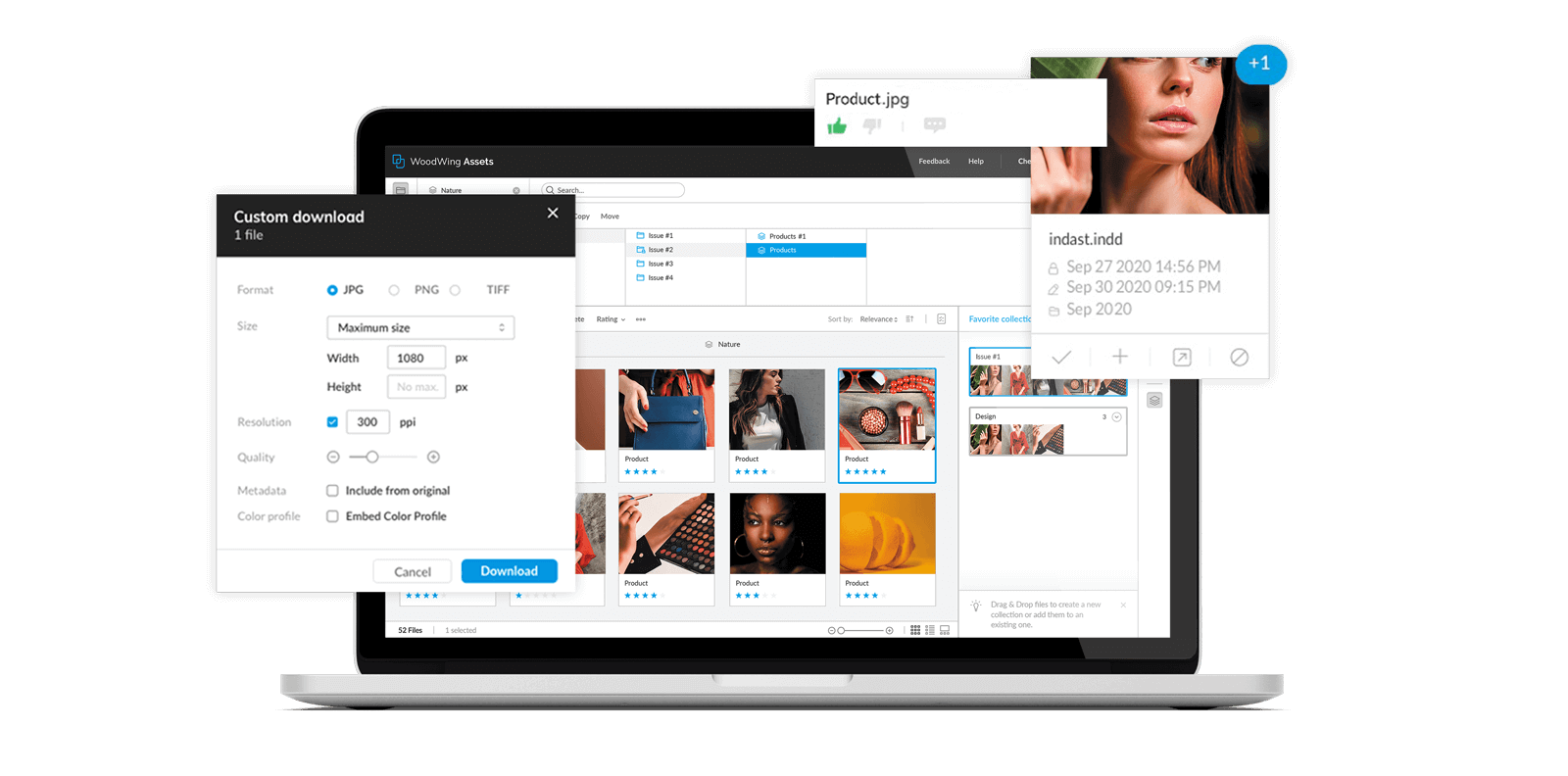Netflix is the undisputed master of this, serving up personalized content to 209 million users worldwide, every day.
Here’s what ambitious publishers can learn about engagement, personalization and atomic content from the largest streaming service on the planet.
In this article:
- Don’t blame yourself for Netflix binges
- What is atomic content?
- How does Netflix use atomic content for personalization?
- Essential publishing software for content personalization
- Astronomical ideas for atomic content?
Don’t blame yourself for Netflix binges
If you’ve ever stayed up way too late watching Netflix - and spent the next day feeling tired and foolish - it’s not your fault.
Everything Netflix does is designed to maximize the time you spend streaming content. From the thumbnails on your home screen to auto-playing the next episode. And we love them for it - even if it does sometimes make waking up difficult.
Netflix is pioneering content creation at an unprecedented scale. And they’re winning at it. In 2021, Netflix enjoyed 34% of the streaming market - more than YouTube, Amazon Prime and Disney+ combined. With 209m subscribers worldwide, Netflix staff often quote the mantra that they don’t have a single product. They have 209 million products and each one is unique.
And that’s because Netflix has mastered the art of content personalization. They algorithmically adapt most aspects of their member experience to deliver two things: the most relevant content to subscribers, and the best commercial outcomes to their business.
And none of their content personalization would be possible without ‘atomic content’.
What is atomic content?
Atomic content is about creating - or breaking down existing content into - individual ‘atoms’. Metadata is then added to these atoms to enhance discoverability and context, so they can be used to deliver hyper-personalized customer interactions.
Atoms can be images, text, video, products, offers, calls-to-action… Whatever you need to combine them into exactly the right message. By which we mean the right content, at the right time, on the right platform, to deliver maximum engagement.
Netflix leverage the power of customer analytics, logic and atomic content to build 209m unique products every day. Their use of hyper-personalized visuals and customer engagement methodology is a masterclass for ambitious media publishers - whether you’re streaming shows, publishing articles, or distributing news.
How does Netflix use atomic content for personalization?
If you’re a Netflix subscriber, you’ll have experienced their algorithmic hyper-personalization, perhaps without even realizing it.
To you, it probably just feels like Netflix has really great shows that you want to watch. And it does!
But there’s much more going on behind the scenes. Here are just two ways Netflix gets you to stream more shows.
Visual content personalization
It’s no secret that you see a different Netflix home screen to me. We each see a curated selection of shows based on our past viewing habits, plus recommendations the algorithm thinks we’ll like.
But did you know it goes even deeper? And it uses atomic content to do it.
Because even if you and I both see a thumbnail for the same show, it might not be the same thumbnail.
Once upon a time, Netflix invested time and resources into researching the single best thumbnail to appeal to the broadest possible audience. A universal image that would get the most plays from the largest proportion of subscribers.
But they realized that their global growth - and the diversity of their audience - meant one size would not fit all. So, instead, they decided to identify and use different artwork to appeal to different tastes.
Netflix has a library of atomic content that it can call on to customize the thumbnail you see, to maximize your interest, and increase your likelihood of streaming it.
Here are some examples from the always-illuminating Netflix Tech Blog.
Good Will Hunting
In this example, the thumbnail is personalized based on genre preference. Someone who watches a lot of romantic movies will see artwork containing Matt Damon and Minnie Driver. Whilst someone who primarily watches comedies will see artwork featuring the comedian Robin Williams.

Pulp Fiction
This example is based on which actors a subscriber typically prefers. Someone who has watched all of Uma Thurman’s films will see a thumbnail featuring her. Whereas a John Travolta fan will see him instead.

Stranger Things
This final example shows a variety of thumbnails for the Netflix hit, Stranger Things. What you’ll see depends on whether you’ve shown more interest in horror, noir, thrillers, teen drama, etc.

Key takeaway for publishers:
- Personalized visuals increase engagement
- Customer data forms a basis for logic that informs more targeted audiences - based on past content consumption
- A/B testing lets you know which atoms are most effective in different audience segments
- Visuals comprise atomic content such as imagery and micro-copy
- Atoms need metadata to be discoverable at a hyper-personalized level
Messaging orchestration
Finish dinner at 8 pm and typically start streaming at 8.30 pm? You might get a mobile push notification from Netflix nudging you towards its latest recommendations…
Netflix invests heavily in messaging. Their Messaging team delivers multichannel ‘messaging experiences’ across the customer lifecycle, aiming to drive acquisition, engagement and retention.
Something which, with close to 200m subscribers, they do pretty well.
Their platform sends millions of messages every day, across multiple platforms and devices, all personalized to individual user behaviors and interests.
One of the main types of messages they send is engagement messages to existing subscribers. These messages promote a show that has been algorithmically selected for the individual recipient, based on their past viewing behavior and engagement with previous messages. The aim of the messaging is to add value to the individual audience members but also deliver Netflix’s KPIs.
We won’t promote every title in every message. We send you only what we think you’ll like. And we want to have each message be as impactful as it can. So even if I have five or six eligible messages I can send per account, we only want to send the one that’s most impactful. Messages that will hopefully drive streaming and [minimize] opt-outs. In summary, the goal of personalization is sending the right message, at the right time, over the right channels.
Kamyar Mohager, Engineer Manager at Netflix (taken from his presentation Stranger Pings: How Netflix Does Messaging)
It isn’t just relevance and timing that makes Netflix messaging successful, however. It’s also the customer-centric mindset with which Netflix approach messaging.
We try to look at [notifications] not so much as a marketing channel but part of the product experience. So we ask how we can extend the streaming experience through notifications and how can we [...] augment and enhance their streaming experience? Messaging is important for us from an engagement standpoint because we can reach out to users and inform them of great content that's highly personalized, that will get them to discover new things.
Kamyar Mohager, Engineer Manager at Netflix (taken from his presentation Stranger Pings: How Netflix Does Messaging)
However, even with highly targeted messaging, Netflix knows now might not be the ideal time to start streaming. That’s why their title-driven messages include several calls-to-action, to bring you back to the content you’ve started to engage with.
- Actions
- Stream now
- Download
- Add to list
- Remind me
This is a great example of how Netflix messaging improves the customer experience - by eradicating FOMO and removing the burden of having to remember a new title (by adding it to a list or opting into a reminder). This level of customer service deepens customers’ relationship with the streaming service and keeps bringing them back for more.
Key takeaway for publishers
- Customer data provides a basis for creating logic that informs more targeted audiences - based on time of day, device and viewing preferences
- Mindset shift: messaging isn’t marketing - it's part of the customer experience
- Data-informed personalization allows Netflix to surface highly relevant recommendations that customers are happy to hear about
- Calls-to-action aren’t limited to the here-and-now - multiple CTAs empower viewers to control when and how they consume content
- Messages comprise atomic content such as imagery, video and tailored copy
- Atoms need metadata to be discoverable at a hyper-personalized level
Essential publishing software for content personalization
Note: This section is NOT about the technology that Netflix uses. Netflix employs a wide range of software to deliver their hyper-personalized atomic content. You can discover more about their messaging technologies - for example - in Stranger Pings: How Netflix Does Messaging. This section is about two types of publishing software that publishers can use for atomic content and personalization.

Customer engagement / messaging orchestration platform
A customer engagement platform lets brands customize, personalize, and optimize every touchpoint with their customers. Typically by creating data- and logic-informed sequences of communication, often spanning multiple channels such as email, mobile messaging, in-app, and online.
A customer engagement platform usually includes modules for:
- Data collection - ingesting and analyzing data from your apps and websites to build a picture of customer behavior
- Audience segmentation - using data to create more targeted and dynamic audiences, to enable more personalized and relevant messaging
- Sequence planning - designing messaging sequences using logic to make sure your communication is perfectly orchestrated
- Analysis - reviewing campaign performance to allow you to test and refine your approach in real-time
This kind of platform makes it possible to scale content personalization and drive growth thanks to higher customer engagement.
In terms of atomic content and personalization, the customer engagement platform is your planning and distribution system.
Digital Asset Management (DAM) system
A Digital Asset Management system is mission control for your atoms of content. It provides a centralized place to store all of your images, video snippets, graphics, audio, etc. And to add the metadata that makes them instantly accessible for your content creators.
A Digital Asset Management system typically includes the following features:
- Digital asset ingest - the ability to upload and store millions of digital assets and atoms
- Metadata application - often using AI to maximize your metadata application at scale
- Enhanced discoverability - find any asset or atom within a few clicks
- Automatic rendering - download/deploy files in any format, resolution, color profile
- Integrations - plug DAM into your other essential applications for streamlined content workflows
A DAM system eradicates all the bottlenecks and pain points in your digital asset management processes, so you can scale content production without scaling content confusion.
In terms of atomic content and personalization, your DAM is where you centralize and contextualize your atoms, for effortless discovery and deployment.

Psst! The secret to growth is going atomic
You don’t have to be a multinational content publisher to benefit from Netflix’s approach to content personalization and atomic content. Even small publishers and media brands can begin to apply Netflix lessons in their publishing operations.
Both DAM and customer engagement systems are available on a software-as-a-service (SaaS) basis - meaning you don’t need a massive upfront investment to get started. There’s no license fee, just a rolling monthly subscription, so you can see whether the software works for you.
Astronomical ideas for atomic content?
Talk to one of our global implementation partners to discuss your publishing software needs. Who knows where atomic content could take you?



